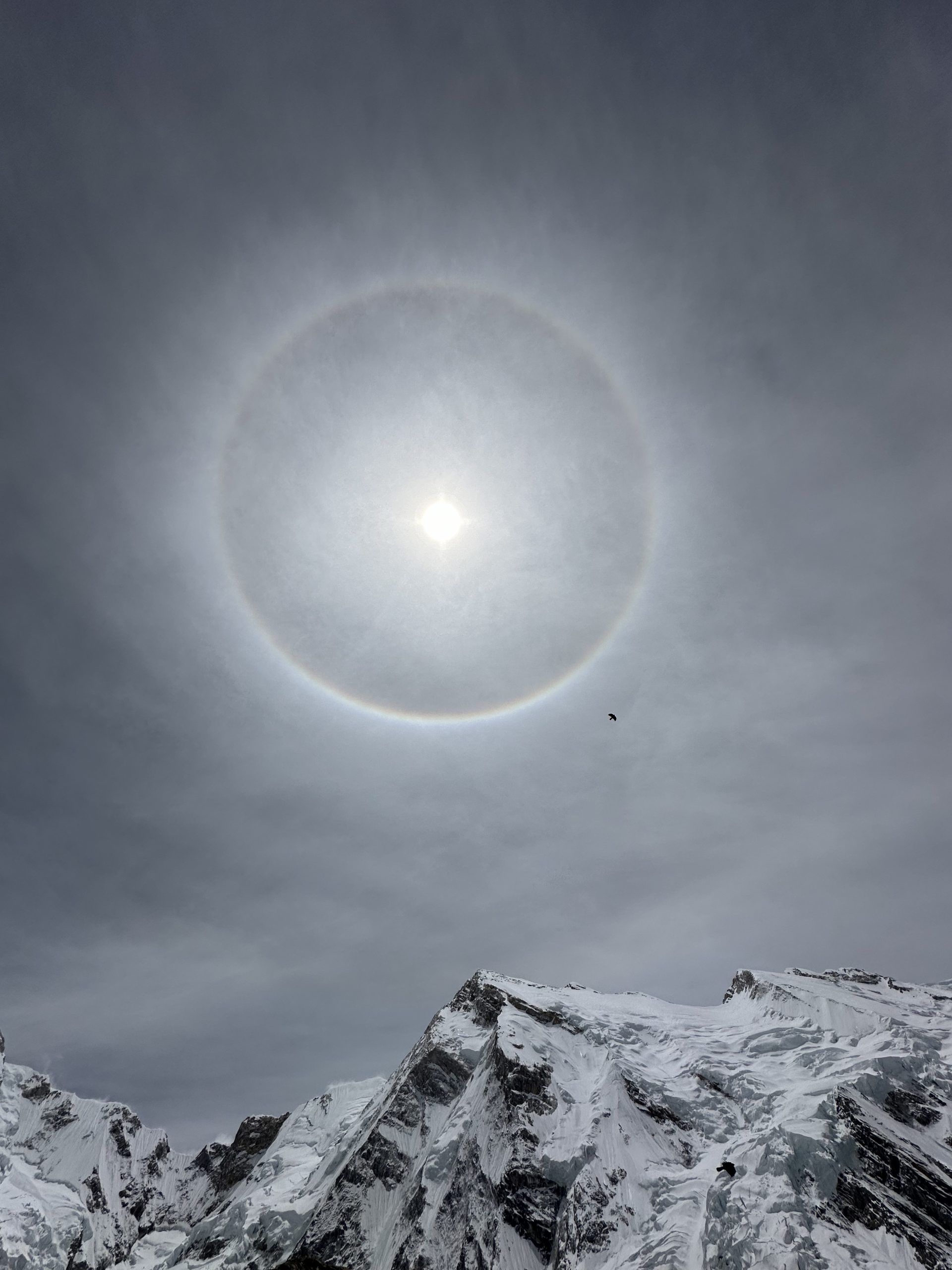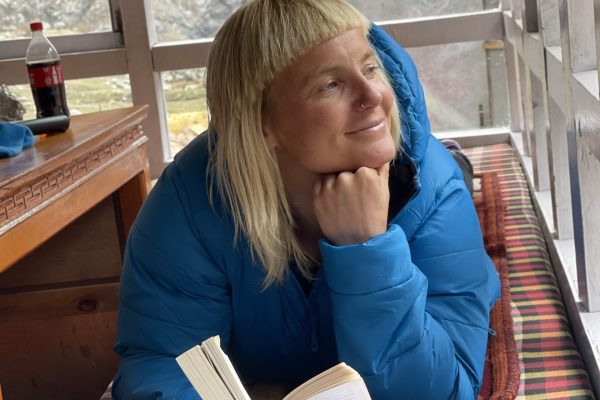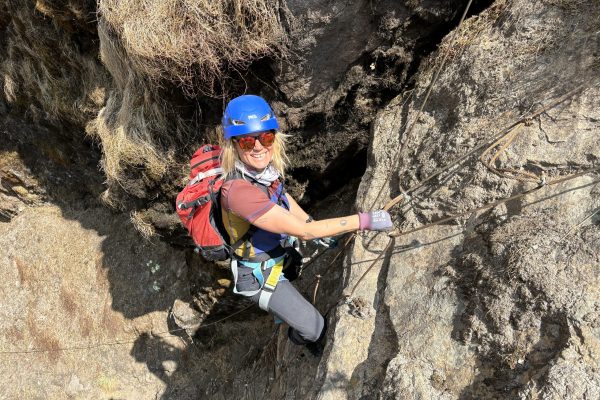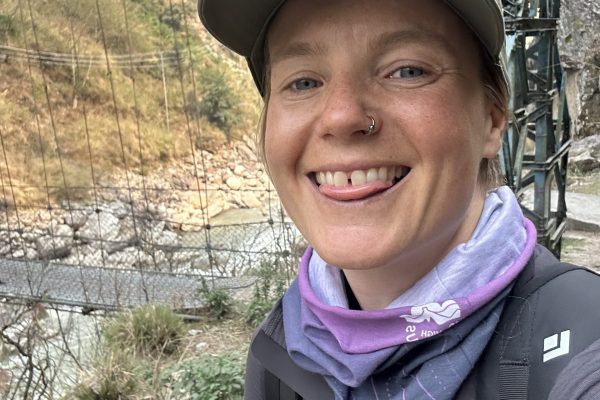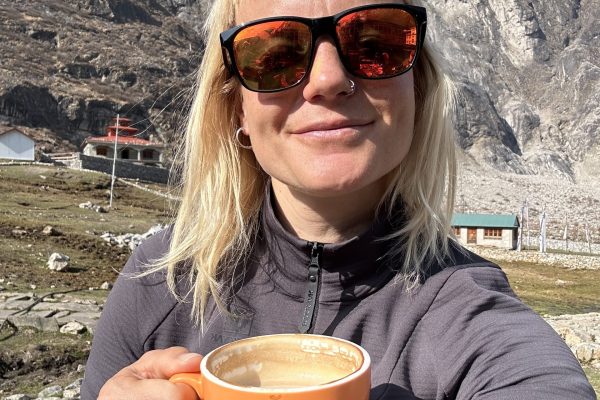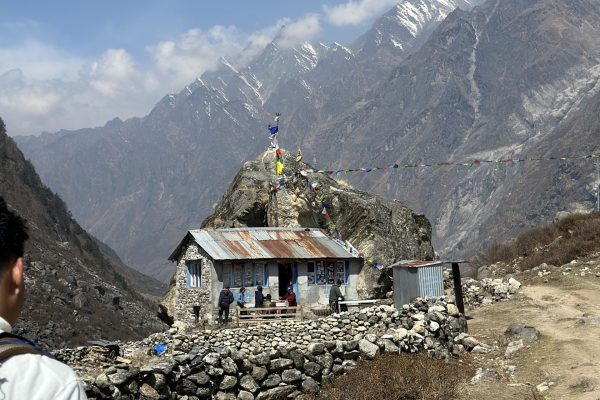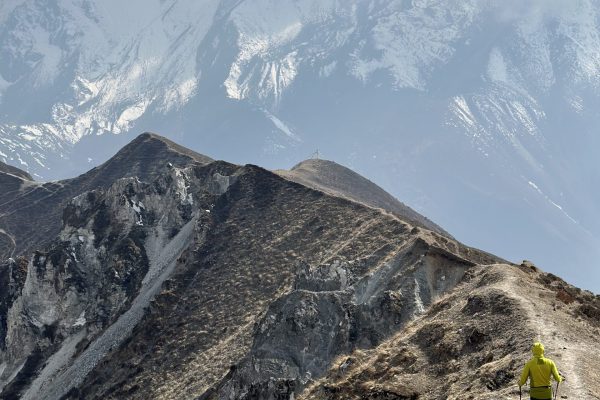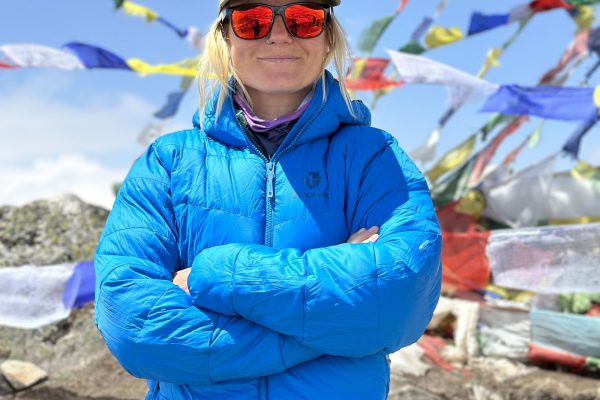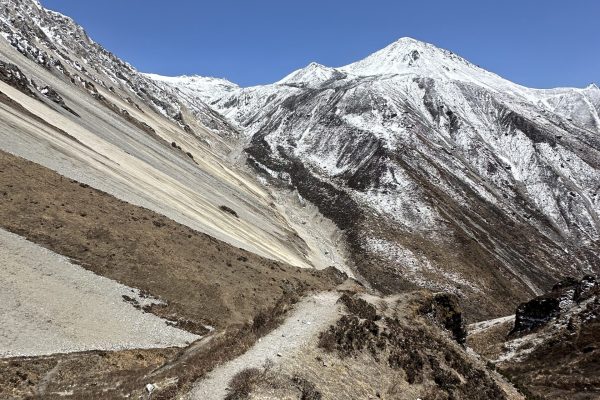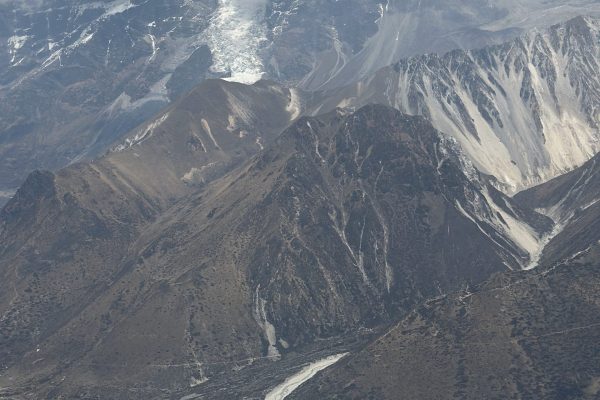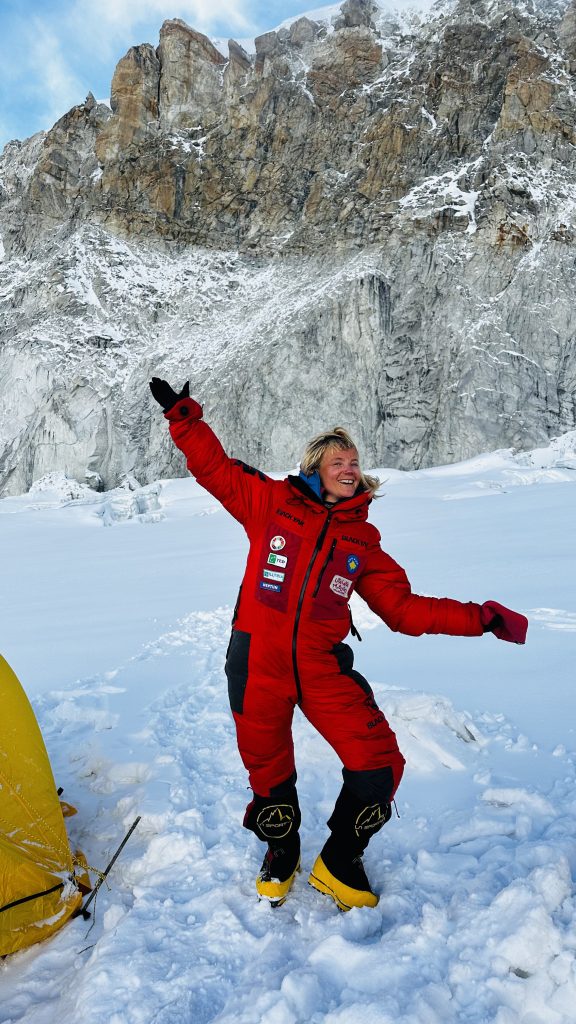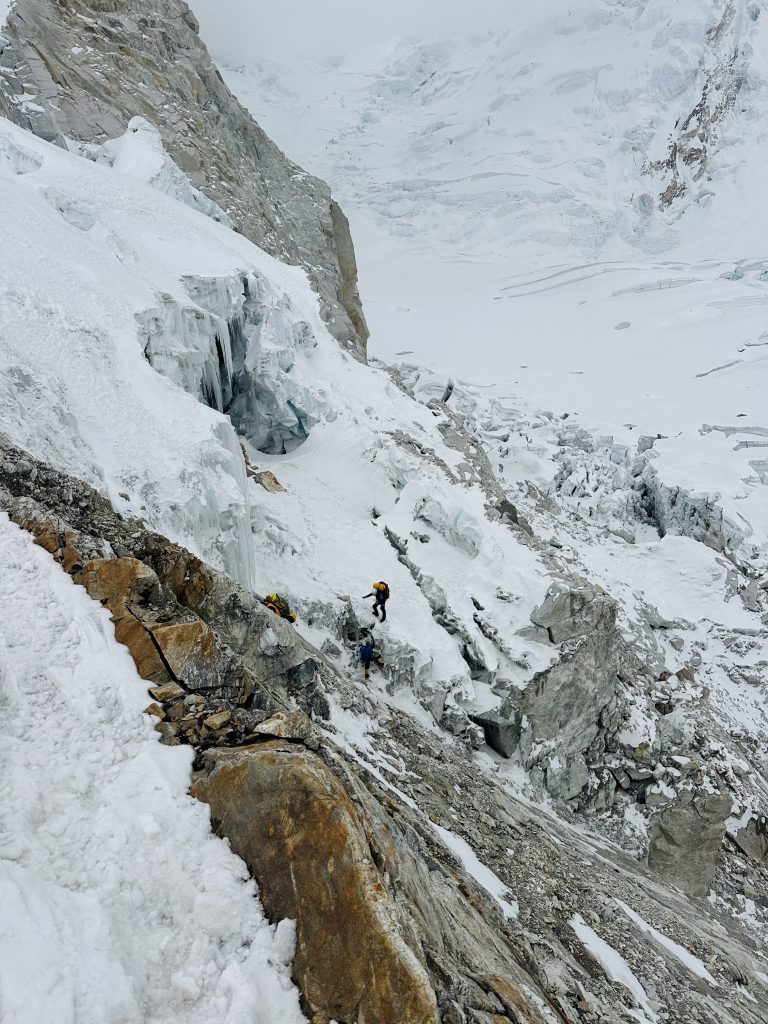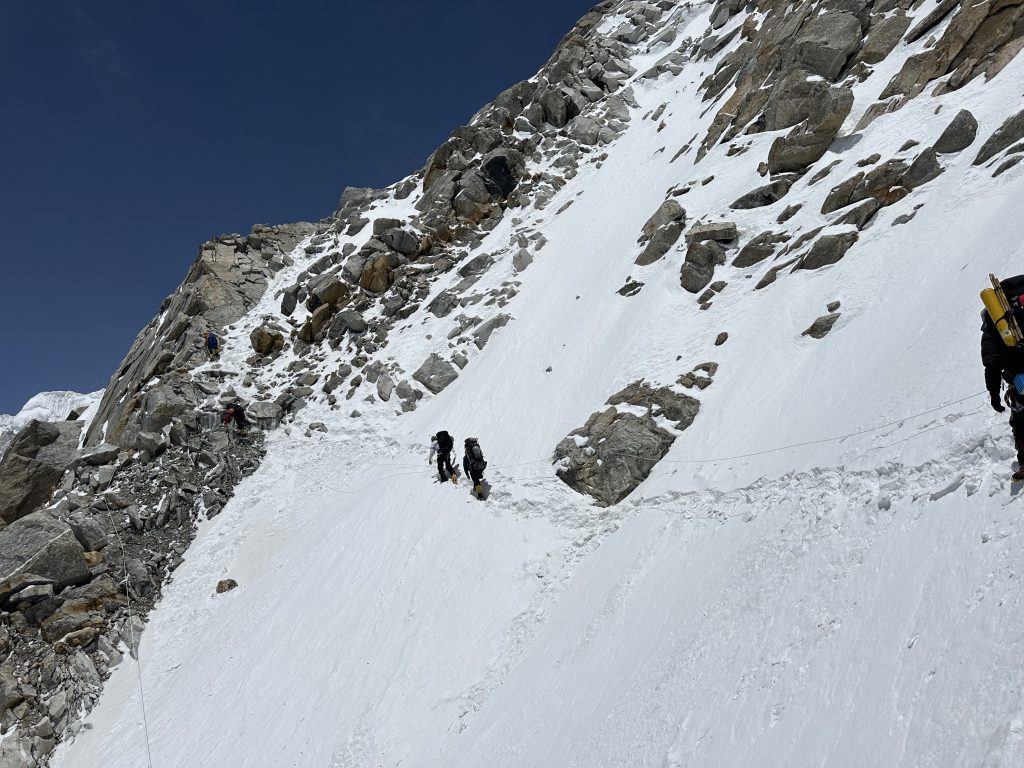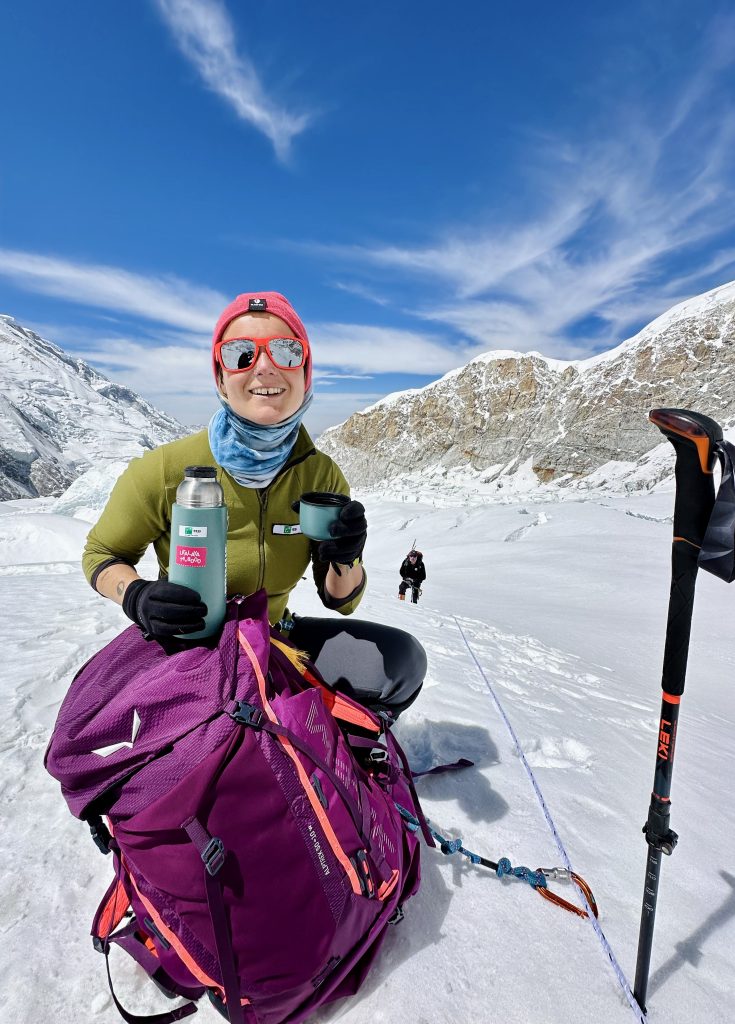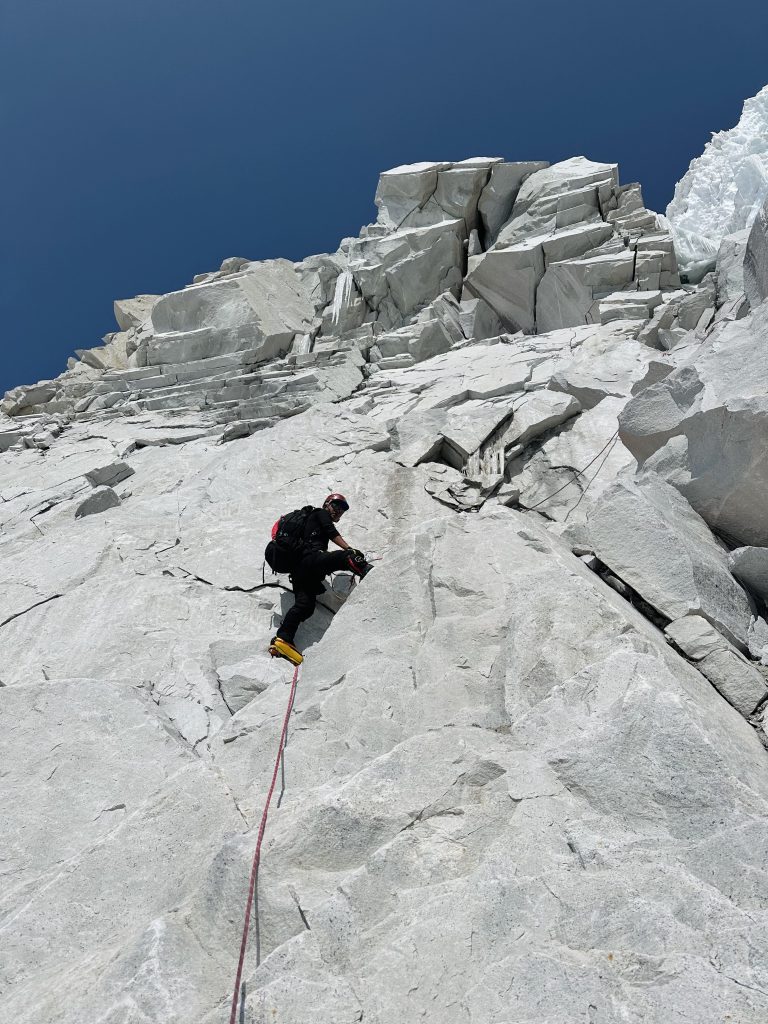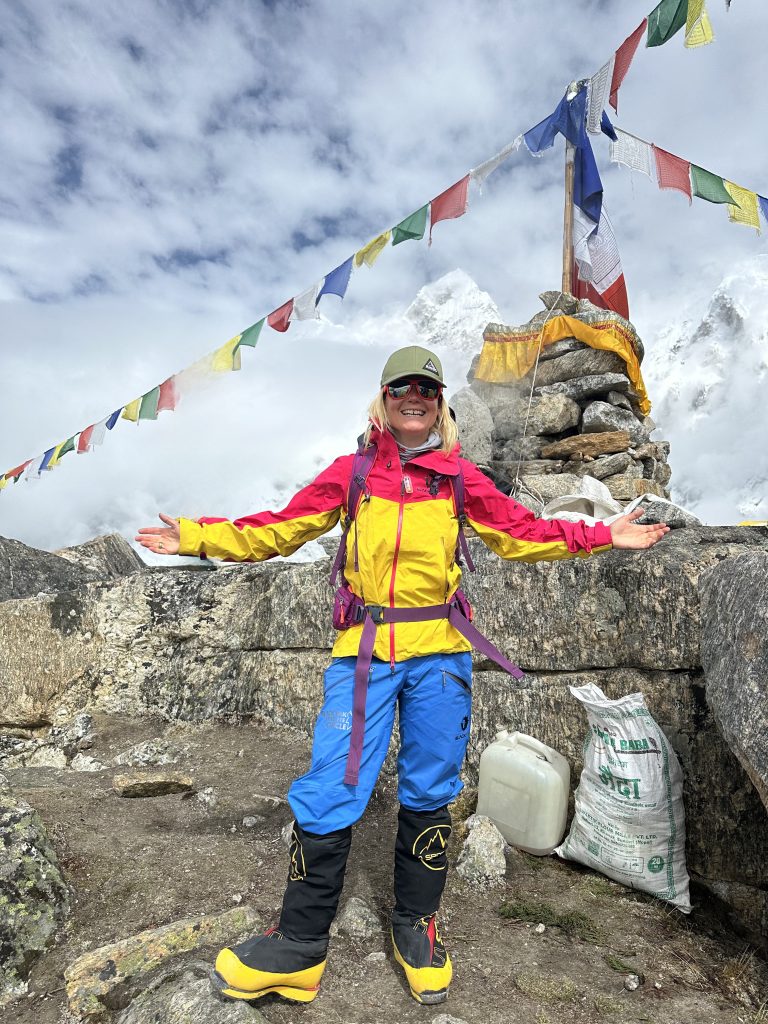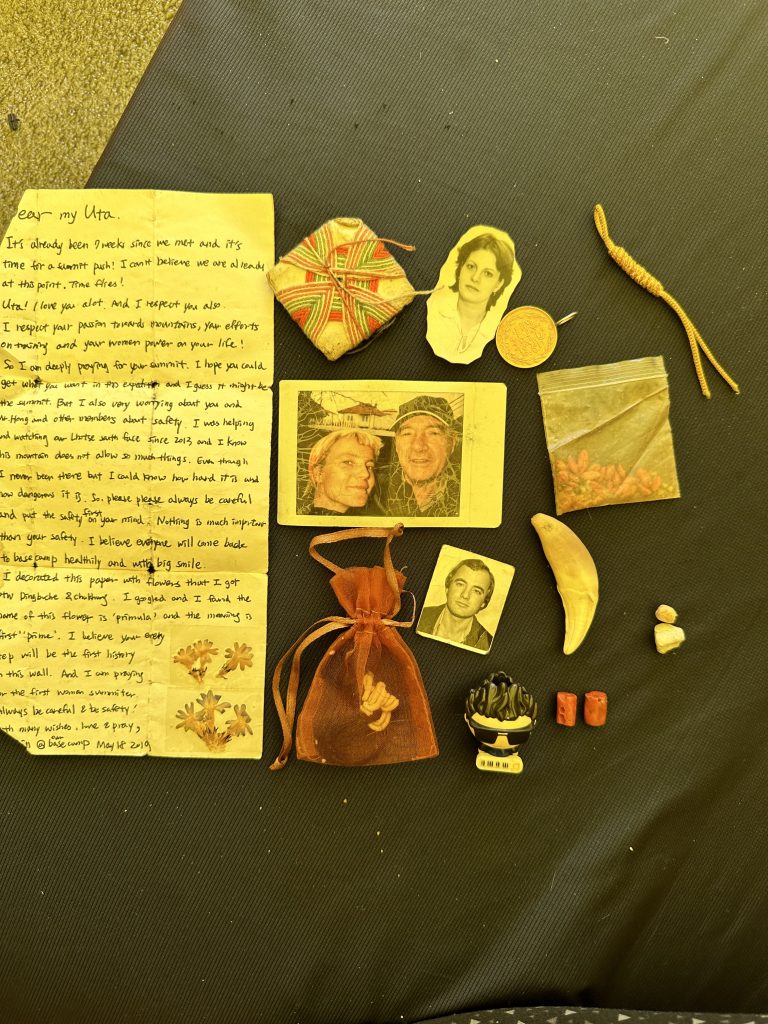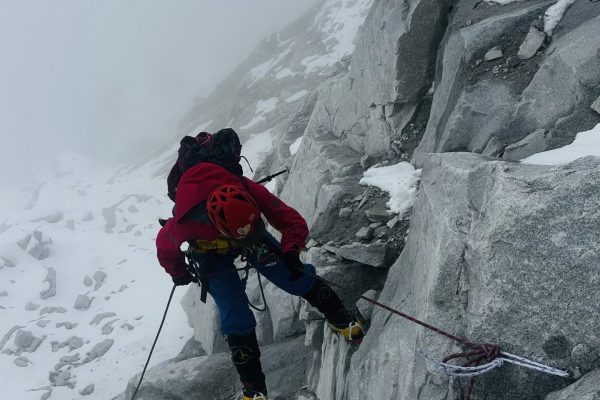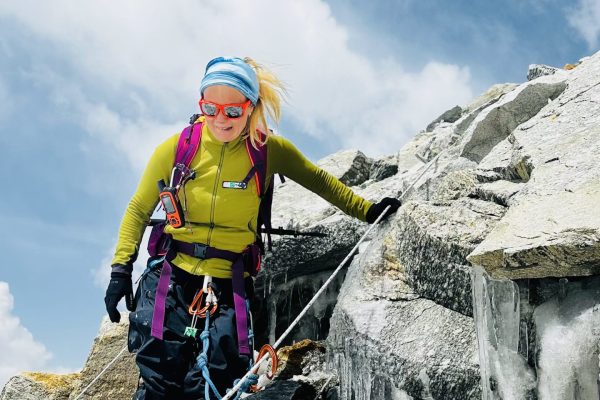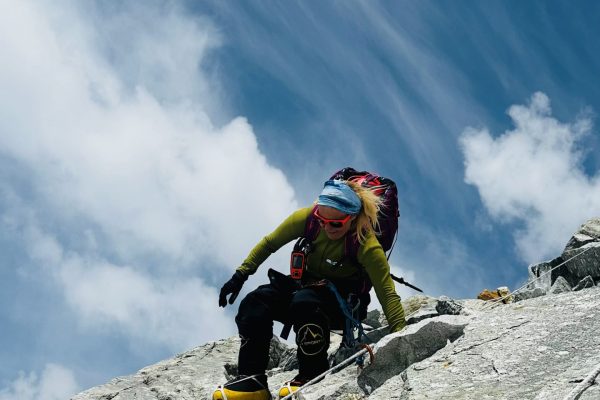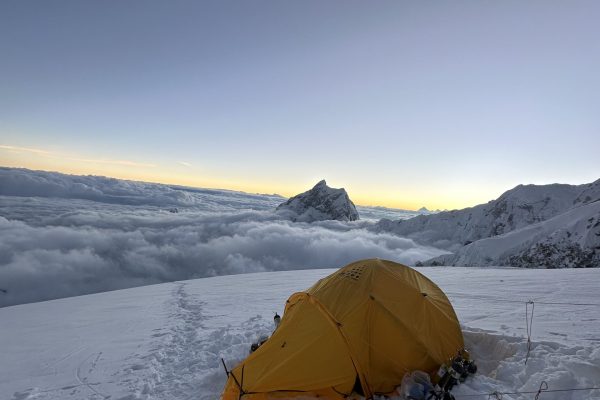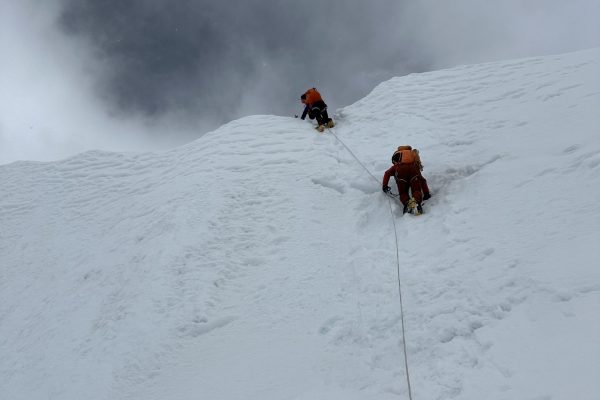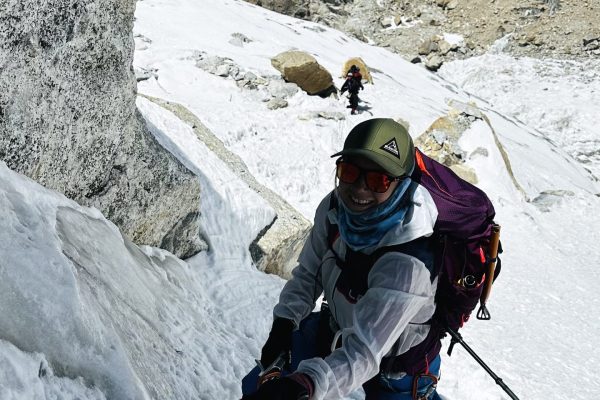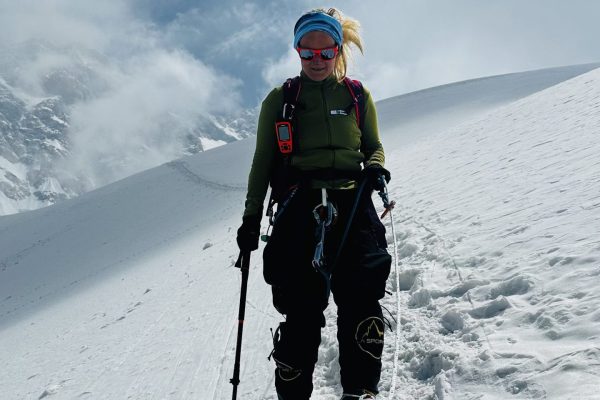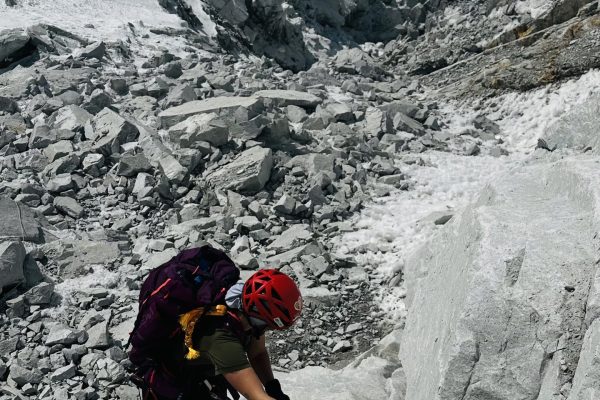Shisha Pangma was supposed to be first!
Older climbers always have told me that don’t be happy before you finally pass the border. In China, everything can change in a day
In the last days at home, preparing for expeditions, meeting friends and family, training, and finishing paperwork for fundraising, I find it easier after doing this for eight years, about 30 times.
Previously, I used to spend more time on packing and preparations. In the last year or two, I’ve spent more time with family and friends, realizing that while everything else eventually gets done, time with loved ones can’t be reclaimed.
Flying to Kathamndu, all the crazy time with meeting lots of lots of people!
The first days were spent meeting friends. I arrived last, on April 8th. Two days later, we learned that permits from China would be delayed, so we decided to do something else to acclimatize without spending too much.
It was Eid, and with a few Muslims on the team, Sheroz, a Pakistani climber, offered a dinner to celebrate together. The next day, we drove to Langtang National Park without a clear plan on where to go or how long to stay. I felt secure with my maps and GAIA, confident I would find ways to enjoy the journey.
Langtang: The Unplanned Trip
With no clear plan on where to go or how long to stay, I felt secure with my maps and GAIA. On April 11th, we arrived in Syabru Bensi after a rough six-hour drive. From April 12-14, we walked through Lama, Langtang, and set up a base in Gompa. During this time, I climbed Kyanjin Ri and three nearby peaks, reaching up to 5200 meters, and hiked to the North Base Camp and Langtang’s Via Ferrata. Despite uncertainties about our permits for Shisha Pangma, I thoroughly enjoyed my first time in Langtang.
Hiking, watching the sun and moon, playing cards, and meeting people made it memorable. I would love to return, maybe even work there.
Back in Kathmandu, we awaited news about Shisha Pangma. On April 22, we learned China was closed, canceling our plans. We then shifted our focus to Kanchenjunga. Many friends flew home, but I saw another opportunity. We decided to fly to Kanchenjunga Base Camp due to the late season. After flying to Lukla on April 25, we faced delays. On April 26, we were still waiting in Lukla, hoping to fly to Base Camp soon.
April 28: We finally flew to Kanchenjunga Base Camp (BC). The journey involved two flights: Lukla to Taplejung, and then Taplejung to Cheram, taking the entire day due to luggage and Sherpas delays. Upon arrival, I was greeted warmly by Chatharine. We spent the day unpacking, organizing, and meeting the team: Said Sadpara (Pakistan), Hanz (Austria), Adrien Day (UK), Sergie (Kyrgyzstan), and Alina (Russia). That night, the altitude hit hard, making sleep difficult.
April 29: I took a walk to the crampon point, struggling again with altitude symptoms.
April 30: Climbed to Camp 1 (C1) at 6100-6200 meters. The route had four sections: crampon point, a flat part followed by a steep rocky section, a steeper ascent, and the final traverse to C1. After a short rest at C1, I descended quickly.
May 1-2: Rest days in BC and Puja ceremony.
May 3-4: First rotations to C2 and C3. The climb to C2 took 7.5 hours, and I struggled with cold and exhaustion. Sleeping was tough at high altitude. The next day, we climbed to C3, breaking trail through fresh snow. I turned back at 6650 meters due to worsening weather and returned to C2. Our tent wasn’t ready, but with help from a Sherpa, we set it up and rested. Descended to BC the next day, dealing with foot wounds and concerns about recovery.
May 5-6: Rest at BC, enjoying good food and discussing summit plans. There were uncertainties about our Sherpa’s health and logistics at C3.
May 7: Finalized summit push plans:
May 8: BC to C2
May 9: C2 to C3
May 10: C3 to C4, then start the summit push
May 11: Summit attempt and descent
May 12: Return to BC
Reflections
I’m happy to be back in the mountains, despite feeling anxious at times. Reminding myself, “It’s just another day in the mountains,” helps. My brief stay in Langtang for acclimatization has been beneficial. I’m motivated for the summit and eager to return home soon. Tomorrow, we start the summit push, and I’ll share the full experience upon my return.
First Attempt at Climbing Kanchenjunga: An Unexpected Turn of Events
Our first attempt at climbing Kanchenjunga followed the planned dates, but that was the only thing that went smoothly. Everything else was chaotic and out of control.
We progressed day by day from C2 to C3, eventually reaching C4 early because Imagine Nepal Sherpas set up camp 150 meters lower to avoid carrying additional loads. Initially, I was happy to arrive early, thinking we could rest more, but the energy and vibe were off. Our Sherpas team were young and more focused on making videos and taking pictures with their GoPros and 360 cameras, which earned them the nickname “360” on this blog.
On summit night, my Sherpa, Taram, was sick. He had been sick for days and wasn’t feeling strong, but I hoped he would recover. Nuri, the base camp manager, reassured me that our big team would have support if needed. Pasang, a Sherpa from another member with whom we shared food and tents, decided our team would leave last to avoid breaking the trail. So, we did.
I started walking with a 0.5 flow rate of oxygen (a rate typically used for sleeping). After a while, Pasang and his member, along with Taram, caught up. It was clear Taram was struggling. Pasang tried to help but eventually told me Taram couldn’t continue. Despite my pleas for Pasang to wait, his member insisted they had to rush due to oxygen concerns. Pasang refused my request for the radio and left with his member, disregarding our well-being.
As the last ones on the trail, I knew continuing was hopeless without support. I asked Taram to give me all three oxygen bottles to lighten his load. Even then, he couldn’t keep up. I decided to go ahead alone, sending Taram back down. Angry and worried, I continued. The night was cold and windy, but I felt strong, despite carrying approximately 15-17 kg of heavy bag. However, doubts crept in about the long climb ahead with limited oxygen.
Soon, I saw the team ahead, then realized they were coming down. Unsure of what was happening, I decided to descend too. Coming down was faster but more dangerous due to the heavy load and crevasses. I fell into one but managed to slide out. Exhausted, I struggled through deep snow, especially near lower C4. At one point, my leg got stuck in a crevasse, and I was trapped for ten minutes. After calling for help in vain, I used my jumper to pull myself out.
Reflections
This attempt was filled with challenges, from Taram’s illness to team dynamics and harsh conditions. Despite the setbacks, the experience reinforced my resilience and determination. Now, with lessons learned, I’m preparing for the next opportunity to summit Kanchenjunga.
?



